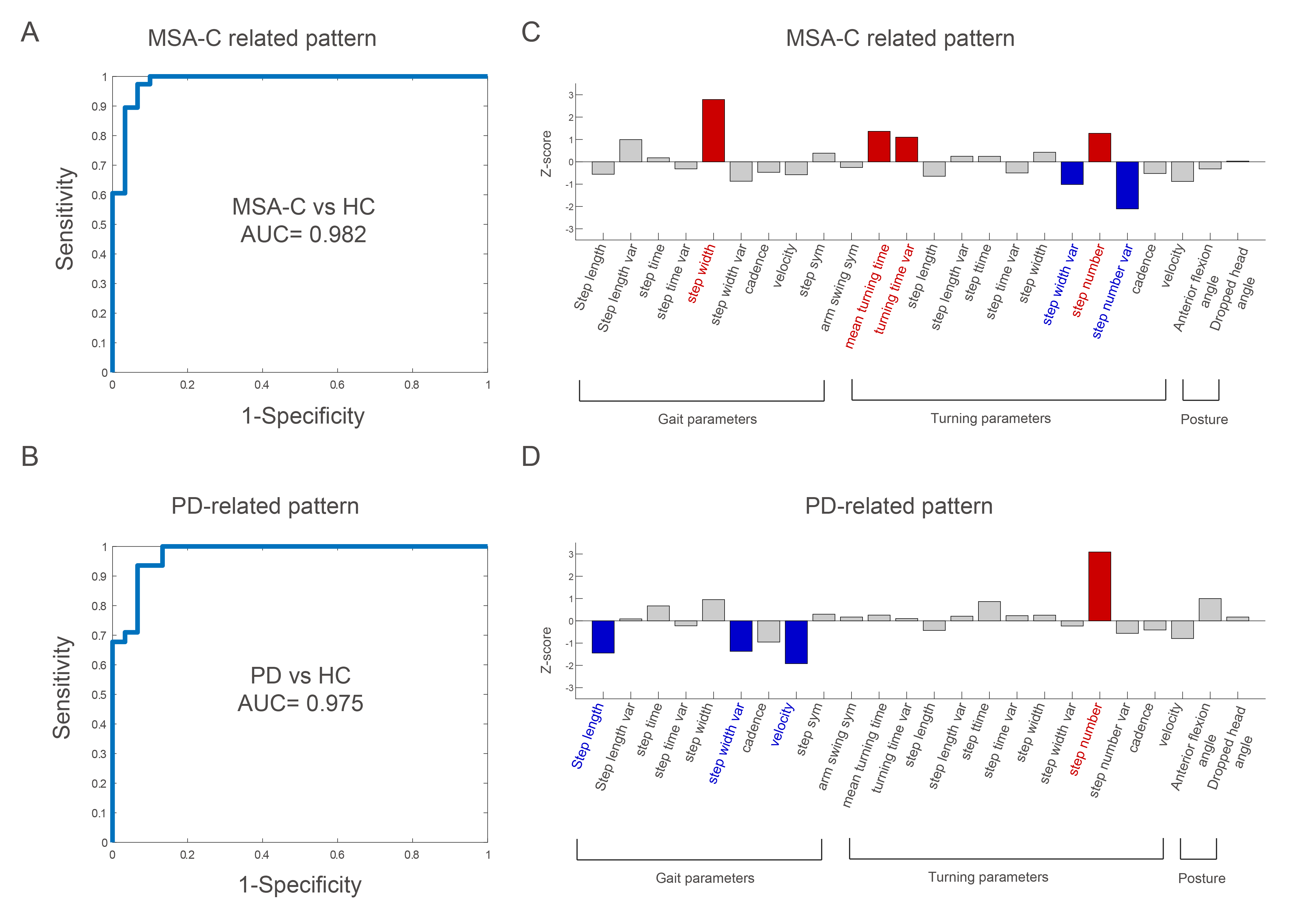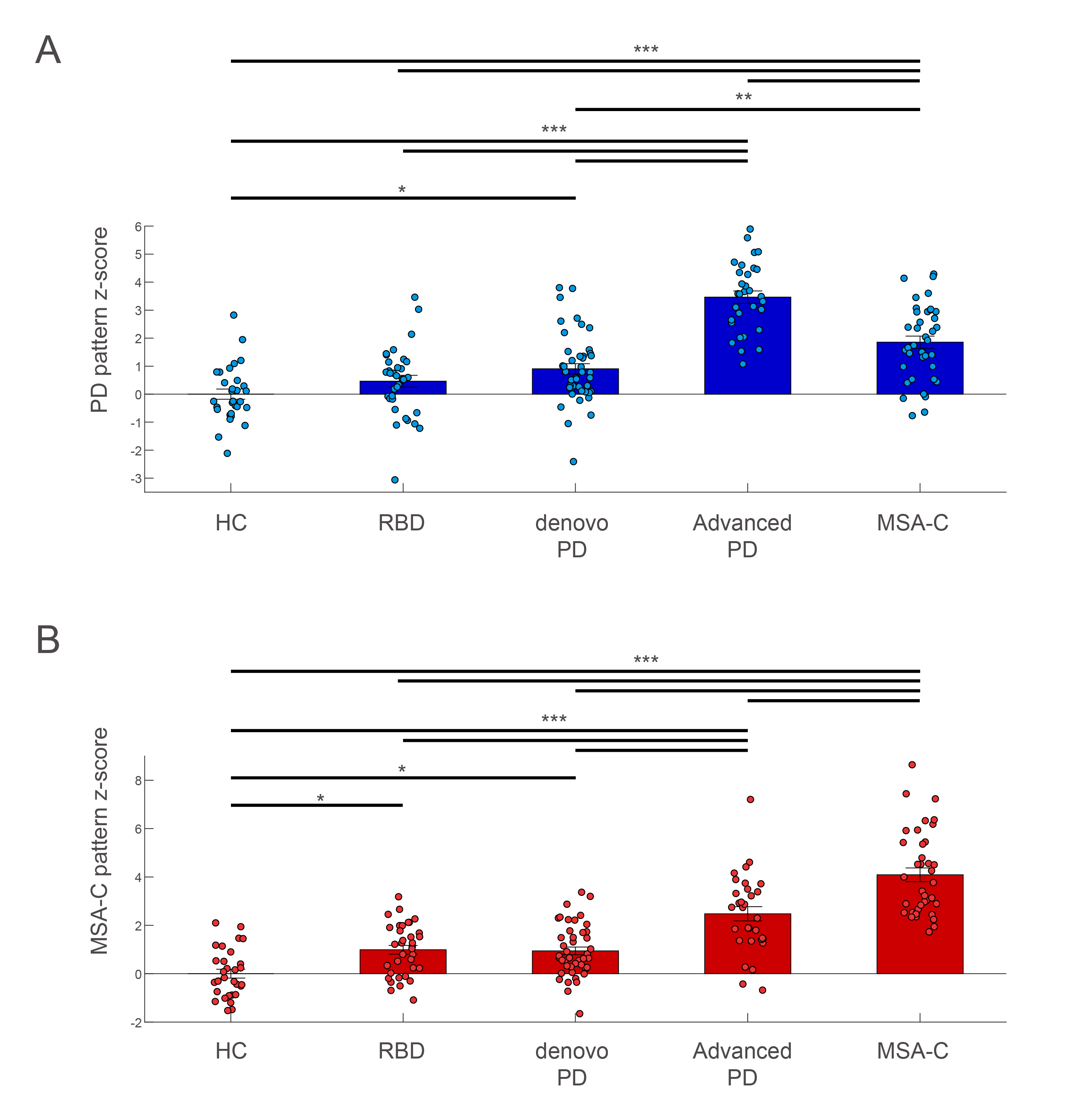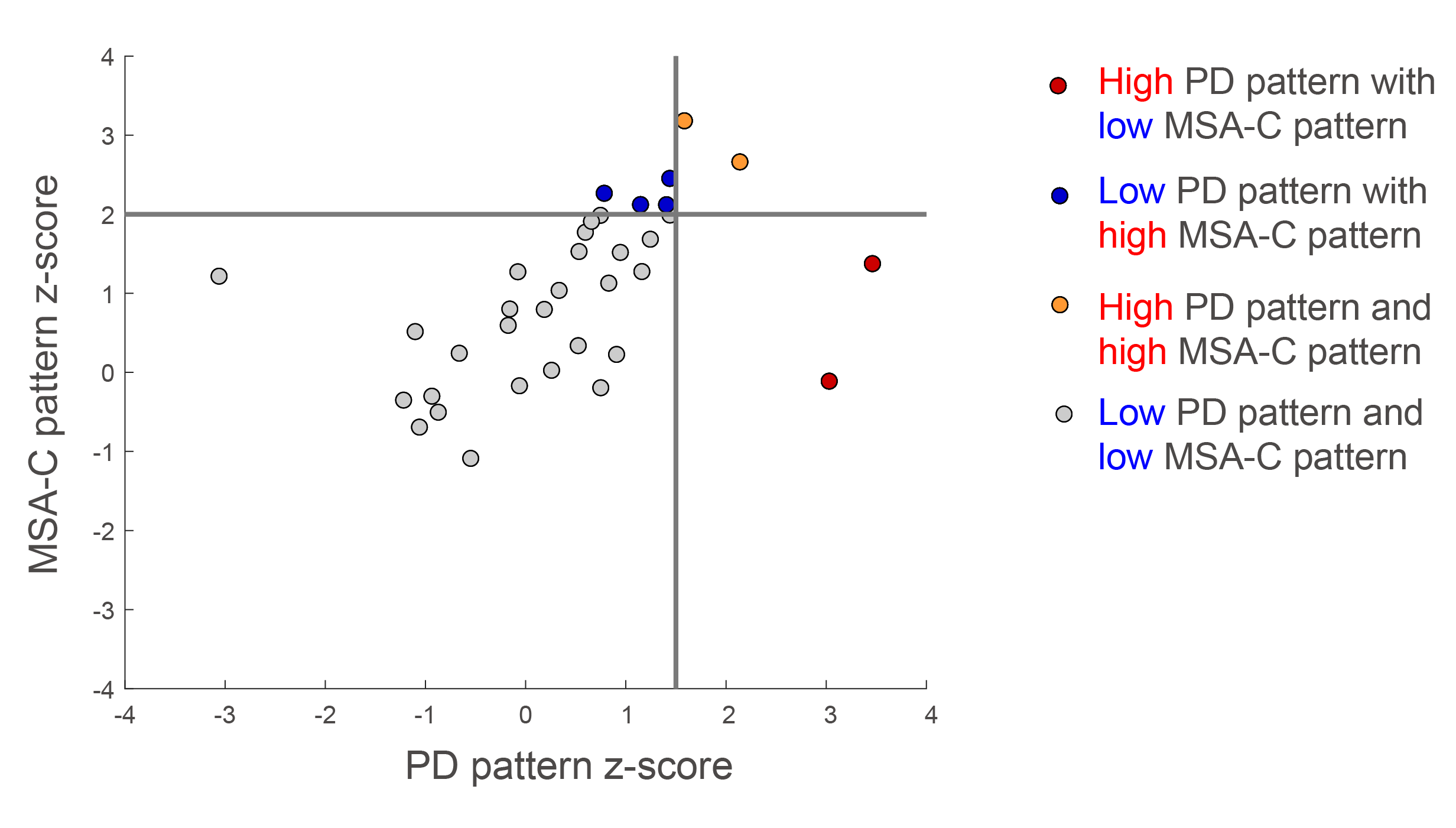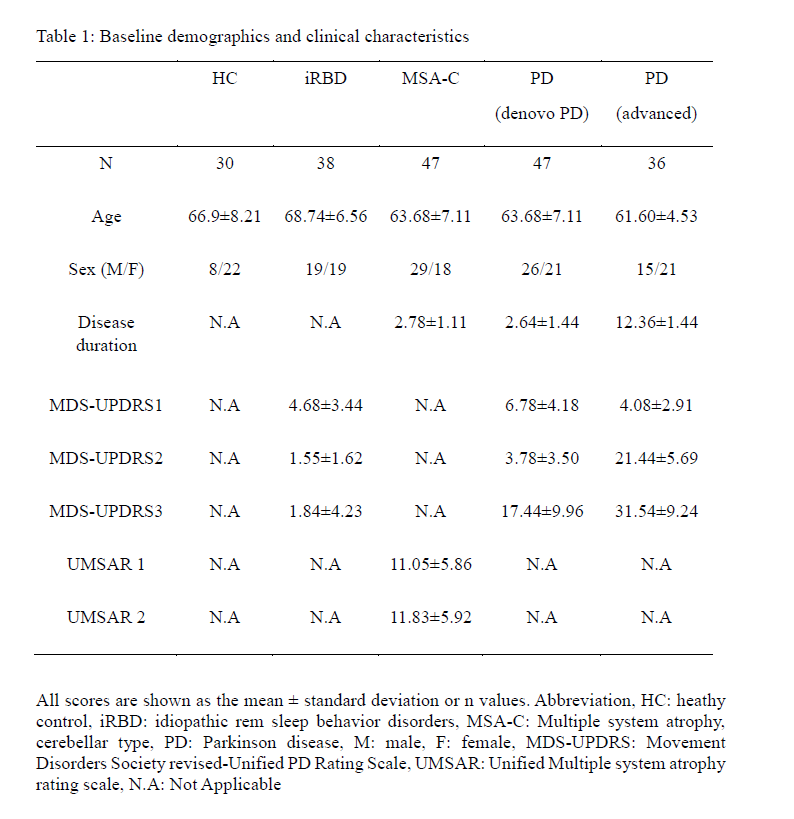Category: Parkinsonism, Others
Objective: This study aims to develop a disease-related motor pattern from a single 2D RGB video as a biomarker for early diagnosis and monitoring of Parkinson’s disease.
Background: Gait in Parkinson’s disease (PD) provides comprehensive motor information including spatiotemporal foot movement, arm swing, posture, and turning. We have developed a video-based analysis tool to extract motor symptoms from a single 2D RGB video of gait.
Method: A total of 198 participants were enrolled between 2019 and 2023, including 30 healthy controls, 38 individuals with idiopathic REM sleep behavior disorder (iRBD), 47 with cerebellar-type multiple system atrophy (MSA-C), 47 with de novo PD, and 36 with advanced PD (Table 1). Participants walked along a 7-meter walkway, performing forward walking, a 180-degree turn, and walking back, recorded using a single RGB camera. Videos were analyzed using 3D video-based gait analysis (gaitome), deriving 24 parameters from gait, turning, and posture domains. MSA-C and PD patterns were characterized using scaled subprofile model of principal component analysis (SSM-PCA).
Results: Disease-related patterns significantly distinguished MSA-C (AUC = 0.983) and advanced PD (AUC = 0.975) from age-matched controls (Figure 1A, B). MSA-C pattern showed wide step length, prolonged mean turning time, high variability in turning time and step numbers, and reduced step number and width variability during turning. PD pattern was marked by shorter step length, decreased step width variability and gait velocity, and increased number of steps during turning (Figure 1C, D). PD pattern z-scores increased gradually from healthy controls to advanced PD groups (ANOVA, post-hoc Tukey’s test, p <0.001). Similarly, MSA-C pattern was most pronounced in MSA-C group, followed by PD, RBD, and HC groups (Figure 2). Among iRBD group, two patients displayed elevated PD pattern scores alongside low MSA-C pattern scores, four patients showed high MSA-C pattern scores with low PD pattern scores, and two patients exhibited elevation in both PD and MSA-C pattern scores (Figure 3).
Conclusion: This study highlights the potential of video-based gait analysis for evaluating motor symptoms in Parkinsonian syndromes, aiding in early diagnosis, differentiation, and monitoring of MSA and PD. Additionally, it shows promise as a biomarker for predicting disease-specific phenotypic conversion in iRBD.
Figure 1
Figure 2
Figure 3
Table 1
To cite this abstract in AMA style:
JH. Shin, SM. Lee, CH. Jeong, R. Yu, SH. Ha, S. Kim, B. Jin, KA. Woo, KY. Jung, JY. Lee, HJ. Kim, B. Jeon. Disease-related comprehensive motor pattern derived from 2D single RGB video as a biomarker for early and prodromal Parkinson disease [abstract]. Mov Disord. 2024; 39 (suppl 1). https://www.mdsabstracts.org/abstract/disease-related-comprehensive-motor-pattern-derived-from-2d-single-rgb-video-as-a-biomarker-for-early-and-prodromal-parkinson-disease/. Accessed December 22, 2025.« Back to 2024 International Congress
MDS Abstracts - https://www.mdsabstracts.org/abstract/disease-related-comprehensive-motor-pattern-derived-from-2d-single-rgb-video-as-a-biomarker-for-early-and-prodromal-parkinson-disease/




